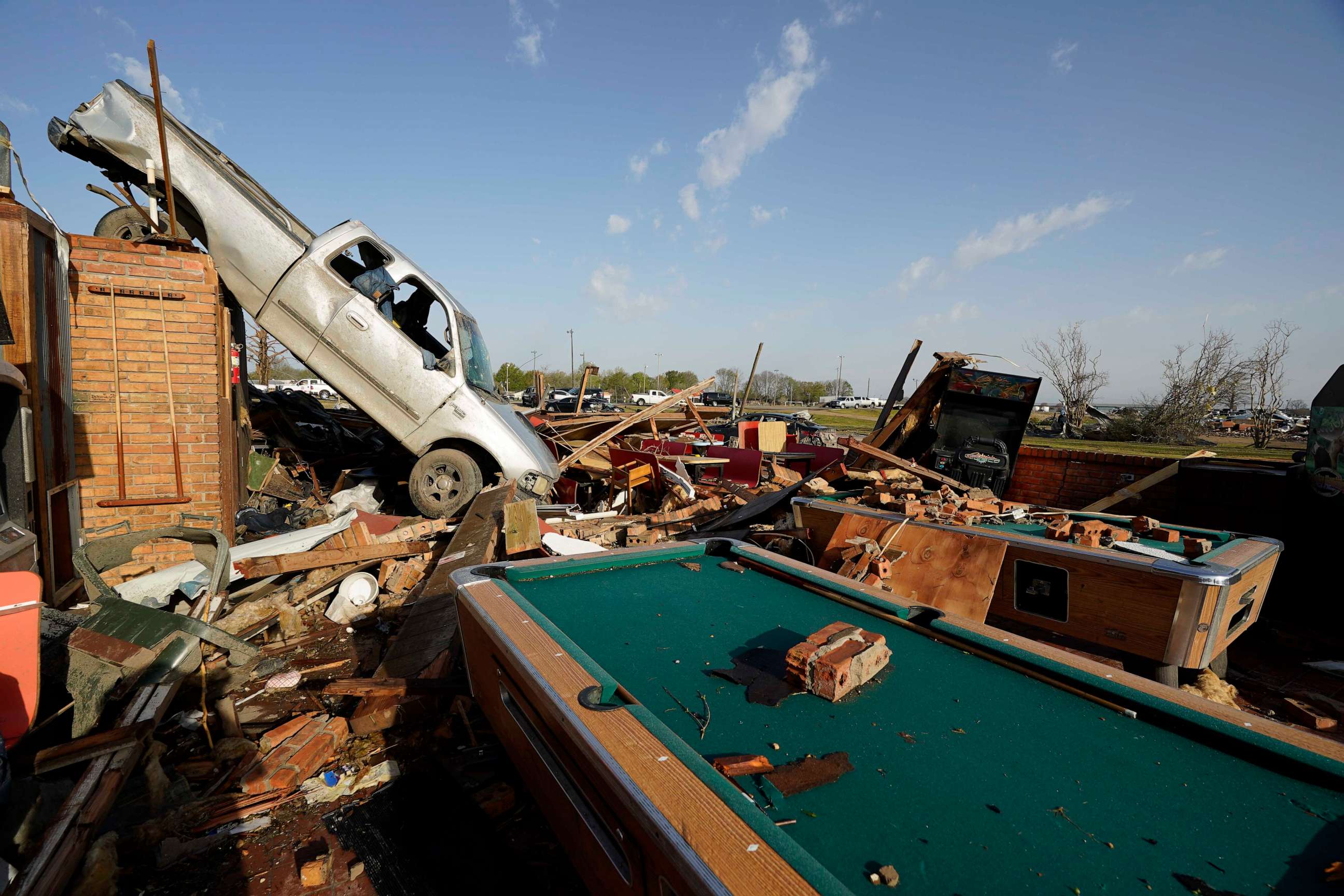Mississippi tornado: How to prepare for a disaster
Federal agencies offer several tips for staying safe during a tornado.
Devastating tornadoes tore through Mississippi on Friday night, leaving at least 25 dead, dozens injured and countless others in the South unsure of how to prepare for the coming storm.
Those on the scene said the town of Rolling Fork had been "leveled," and President Joe Biden called the images coming in from the state "heartbreaking." In addition to the devastating tornadoes that hit Mississippi, severe storm systems continued to move east on Saturday, hitting Alabama over the weekend -- and the National Oceanic and Atmospheric Administration (NOAA) is warning the Southeastern United States could suffer more damages before the weekend's up.
"Scattered severe thunderstorms should occur Sunday through Sunday night from far east Texas into parts of the lower Mississippi Valley and Southeast," the agency wrote Saturday afternoon.
Here are tips for how to prepare for a tornado and what to do if one strikes.
How to prepare
The National Weather Service (NWS) recommends checking the forecast regularly and signing up for alerts. There are 24/7 radio stations from the NWS and the NOAA that provide weather information.
Know how at risk you are for a tornado based on where you live. The Midwest and the Southeast have greater risk of tornadoes than other parts of the U.S., according to the Federal Emergency Management Agency.
And consider installing a safe room or shelter room, which FEMA describes as the "best protective action."

The NWS says families should have a plan in place, including where to meet in an emergency and possible evacuation routes. If you live in a mobile home, officials urge you to find a nearby sturdy building you can get to quickly in the event of a tornado.
To further prepare, the American Red Cross advises having a backup option to charge cell phones or a battery-powered radio to stay connected during power outages. Plus, stock up any shelter room with several days worth of food, water and medicine.
What to do if a tornado strikes
A tornado watch means that tornadoes are possible in your area, while a tornado warning means one was sighted in your area.
If a tornado warning is issued, seek shelter immediately in a safe room, basement or cellar, according to FEMA. If there's no basement, go to a small room on the lowest level of the building. Stay away from any windows or doors.
Take more cover by using your arms to protect the head and neck, FEMA says, and use materials like furniture and blankets to guard you. Be on alert for any flying debris.
If you are outside, get to a sturdy building immediately. FEMA warns not to go under an overpass or a bridge.
"You're safe in a low, flat location," FEMA states on its website.

After the storm
Stay up to date with the latest information from authorities, and stay clear of downed power lines or damaged buildings, according to FEMA.
If you're in a damaged building, exit with caution and remain outside. Don't use matches or lighters inside, the Red Cross says, and beware of broken glass, nails or other objects.
There are also steps to take if you are trapped inside after a tornado: FEMA advises you to cover your mouth with a cloth in order to avoid breathing in dust and to try to get outside attention by texting, banging on a wall or whistling.
ABC's Ahmad Hemingway, Peter Charalambous, Daniel Amarente and Matt Foster contributed to this report.




